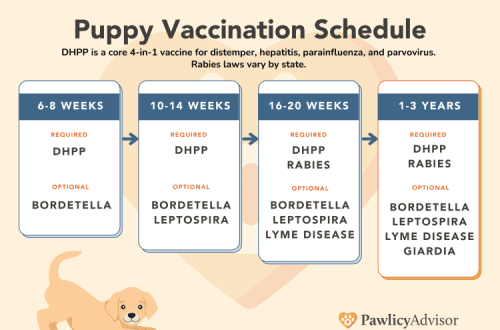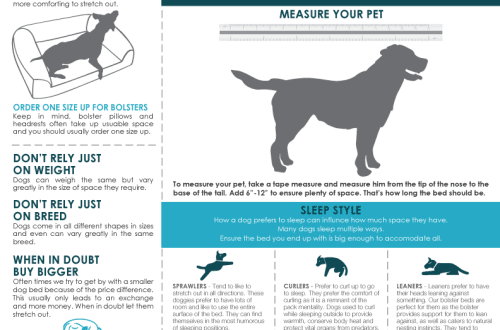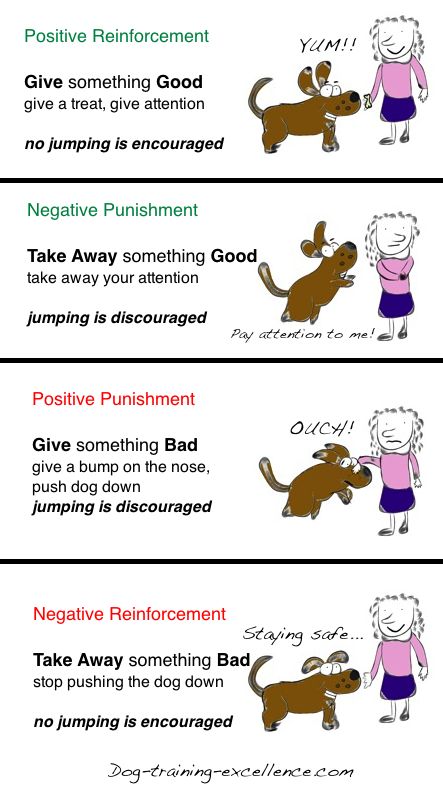
Operant dog training
There are different methods used in dog training and sometimes it can be very difficult to know which one is best for you and your dog. Nowadays, more and more people are using operant learning.


Contents
Such different methods…
In cynology, there are a large number of training methods. Roughly enough, I would divide them into two groups:
- the dog is a passive participant in the learning process (for example, the classic, long-known mechanical method: when, in order to teach the dog the “Sit” command, we press the dog on the croup, thereby causing some discomfort and provoking the dog to sit down)
- the dog is an active participant in the training (for example, we can teach the dog the same “Sit” command by showing the dog a piece of treat and then putting the palm into the dog’s crown area, provoking it to lift its head and, thus, lower the back of the body to the ground).
The mechanical method gives a fairly quick result. Another thing is that stubborn dogs (for example, terriers or native breeds) rest the more the more they are pressed: you press on the croup, and the dog bends so as not to sit down. Another nuance: dogs with a more mobile nervous system with this approach very quickly demonstrate what is called “a state of learned helplessness.” The dog understands that “a step to the right, a step to the left is execution”, and if it makes a mistake, they will immediately begin to correct it, and often quite unpleasantly. As a result, dogs are afraid to make their own decisions, they get lost in a new situation, they are not ready to take the initiative, and this is natural: they are used to the fact that the owner decides everything for them. I won’t comment on whether this is good or bad. This method has been around for a long time and is still used today. Previously, due to the lack of alternatives, the work was built mainly by this method, and we got good dogs that also worked in the armed forces, that is, which could be counted on in real difficult situations. But cynology does not stand still and, in my opinion, it is a sin not to use the results of new research, learn and put into practice new knowledge. In fact, the operant method, which Karen Pryor began to use, has been used in cynology for quite a long time. She first used it with marine mammals, but the method works with everyone: it can be used to train a bumblebee to drive balls into a goal or a goldfish to jump over a hoop. Even if this animal is trained by the operant method, what can we say about dogs, horses, cats, etc. The difference between the operant method and the classical one is that the dog is an active participant in the training process.
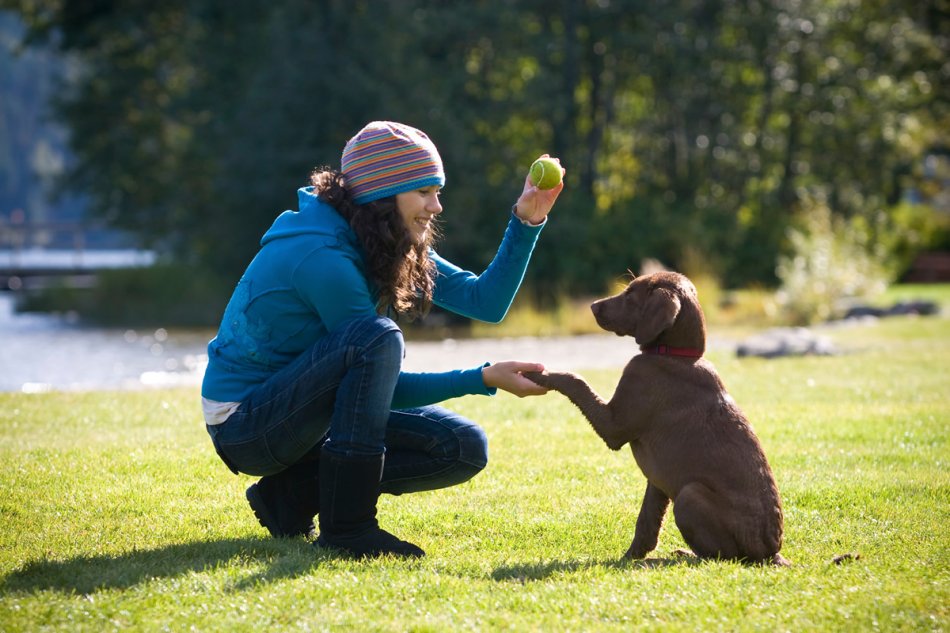



What is operant dog training
Back in the 30s of the 19th century, the scientist Edward Lee Thorndike came to the conclusion that the learning process, in which the student is an active agent and where correct decisions are actively encouraged, gives a quick and stable result. His experience, which is known as Thorndike’s Problem Box. The experiment consisted of putting a hungry cat in a wooden box with lattice walls, which saw food on the other side of the box. The animal could open the door by pressing the pedal inside the box or by pulling the lever. But the cat first tried to get food by sticking its paws through the bars of the cage. After a series of failures, she examined everything inside, performed various actions. In the end, the animal stepped on the lever, and the door opened. As a result of numerous repeated procedures, the cat gradually ceased to perform unnecessary actions and immediately pressed the pedal.
Subsequently, these experiments were continued by Skinner.
The results of the research led to a very important conclusion for training: actions that are encouraged, that is, reinforced, are more likely to occur in subsequent trials, and those that are not reinforced are not used by the animal in subsequent trials.
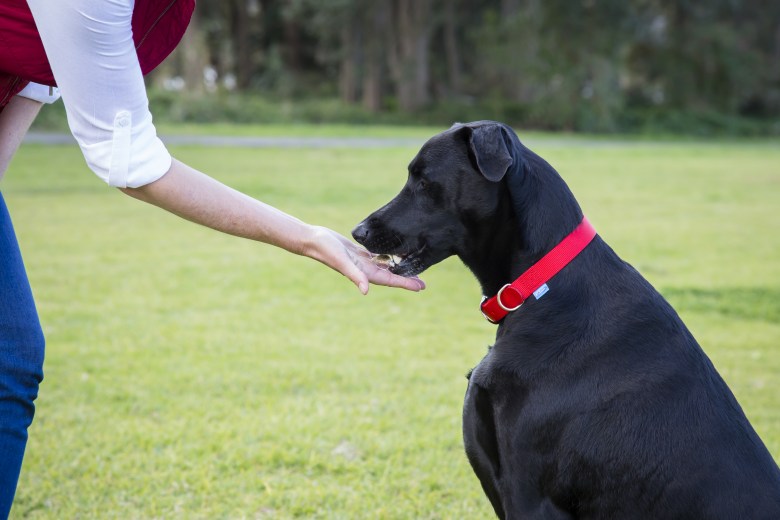



Operant Learning Quadrant
Considering the operant learning method, we cannot help but dwell on the concept of the quadrant of operant learning, that is, the basic principles of the operation of this method. The quadrant is based on the motivation of the animal. Hence, the action that the animal performs can lead to 2 results:
- reinforcing the dog’s motivation (the dog gets what he wanted, in which case he will repeat this action more and more often, because it leads to the satisfaction of desires)
- punishment (the dog gets what it did NOT want to get, in which case the dog will avoid repeating this action).
In different situations, the same action can be both a reinforcement and a punishment for a dog – it all depends on the motivation. For example, stroking. Suppose our dog loves to be stroked. In that situation, if our pet is relaxed or bored, stroking his beloved owner, of course, will serve as a reinforcement. However, if our dog is in an intense learning process, our petting will be very inappropriate, and the dog may well perceive it as some kind of punishment. Consider another example: our dog barked at home. Let’s analyze the motivation: a dog can bark for various reasons, but we will now analyze the situation when a dog barks out of boredom in order to attract our attention. So, the motivation of the dog: to attract the attention of the owner. From the owner’s point of view, the dog is misbehaving. The owner looks at the dog and yells at it, trying to silence it. The owner believes that at the moment he punished the dog. However, the dog has a completely different point of view on this matter – do we remember that she craved attention? Even negative attention is attention. That is, from the point of view of the dog, the owner has just satisfied his motivation, thereby reinforcing the barking. And then we turn to the conclusion that Skinner made in the last century: actions that are encouraged are repeated with increasing frequency. That is, we, unwittingly, form behavior in our pet that annoys us. Punishment and reinforcement can be positive or negative. An illustration will help us figure it out. The positive is when something is added. Negative – something is removed.
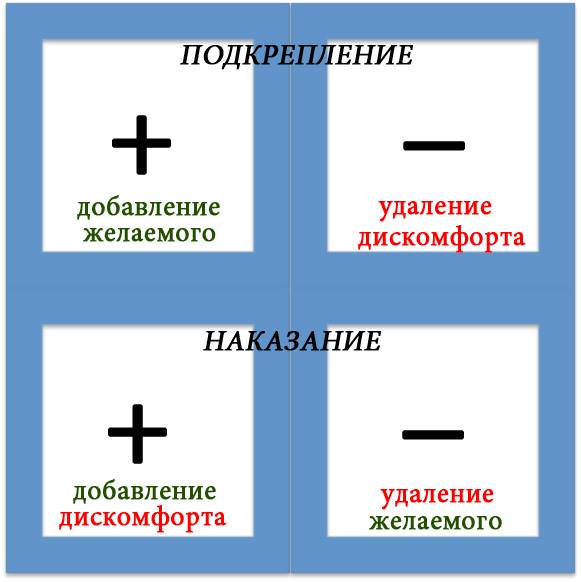



For example: the dog performed an action for which he received something pleasant. it positive reinforcement. The dog sat down and got a piece of treat for it. If the dog performed an action, as a result of which he received something unpleasant, we are talking about positive punishment The action resulted in a punishment. The dog tried to pull off a piece of food from the table, and a plate and a pan at the same time fell on it with a crash. If the dog experiences something unpleasant, performs an action due to which the unpleasant factor disappears – this is negative reinforcement. For example, when using the mechanical method of training in learning to shrink, we press the dog on the croup – we give him discomfort. As soon as the dog sits down, the pressure on the croup disappears. That is, the action of shrinkage stops the unpleasant effect on the croup of the dog. If the action of the dog stops the pleasant thing that she enjoyed before, we are talking about negative punishment. For example, a dog played with you with a ball or in constrictions – that is, it received pleasant emotions. Having played out, the dog inadvertently and very painfully grabbed your finger, because of which you stopped playing with the pet – the dog’s action stopped the pleasant entertainment.
The same action can be viewed as different types of punishment or reinforcement, depending on the situation or the participant in this situation.
Let’s go back to the dog barking at home out of boredom. The owner shouted at the dog, which fell silent. That is, from the point of view of the owner, his action (yelling at the dog and the silence that followed) stopped the unpleasant action – barking. We are talking in this case (in relation to the host) about negative reinforcement. From the point of view of a bored dog who wants to get the attention of the owner in any way, the owner’s cry in response to the dog’s barking is a positive reinforcement. Although, if the dog is afraid of its owner, and barking was a self-rewarding action for it, then the owner’s cry in this situation is a negative punishment for the dog. Most often, when working with a dog, a competent specialist uses positive reinforcement and, a little, negative punishment.
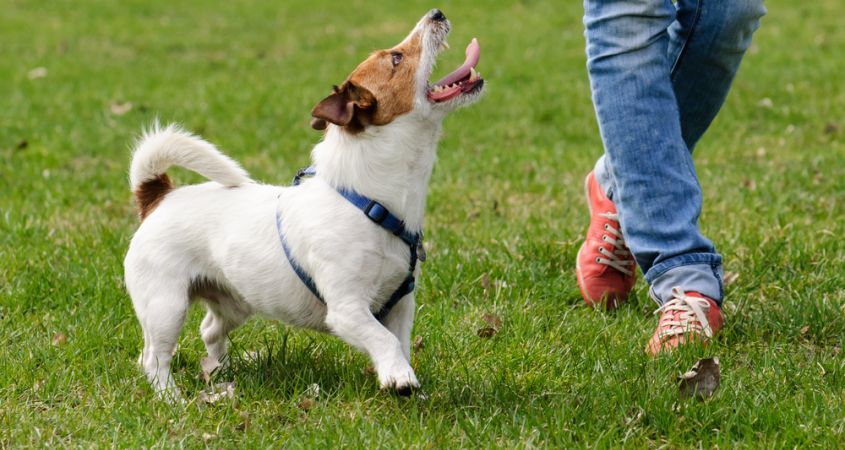



Advantages of the operant dog training method
As you can see, within the framework of the operant method, the dog itself is the central and active link in learning. In the process of training with this method, a dog has the opportunity to draw conclusions, control the situation and manage it. A very important “bonus” when using the operant training method is a “side effect”: dogs that are used to being active participants in the training process become more proactive, self-confident (they know that in the end they succeed, they rule the world, they can move mountains and turn back rivers), they have increased self-control and the ability to work in frustrating conditions. They know: even if it doesn’t work out now, it’s okay, stay calm and keep doing – keep trying, and you will be rewarded! A skill that is mastered by the operant method tends to be fixed faster than a skill that is practiced by a mechanical method. That’s what the stats say. Now I only work with soft methods, but my previous dog was trained with contrast (carrot and stick method) and mechanics. And to be honest, it seems to me that positive reinforcement, when we actively encourage the right behavior and ignore (and try to avoid) the wrong one, gives a stable result a little later than the mechanical approach. But… I vote with both hands for working with soft methods, because the operant method is not only training, it is an integral system of interaction, the philosophy of our relationship with the dog, which is our friend and, often, a full member of the family. I prefer to work with the dog a few longer, but to end up with a pet that gushes with energy, ideas and a sense of humor, has retained its charisma. A pet, relations with which were built on love, respect, desire and interest to work with me. A pet who trusts me implicitly and who is eager to work with me. Because it is interesting and fun for him to work, it is interesting and fun for him to obey.Read on: Shaping as a method of training dogs.





